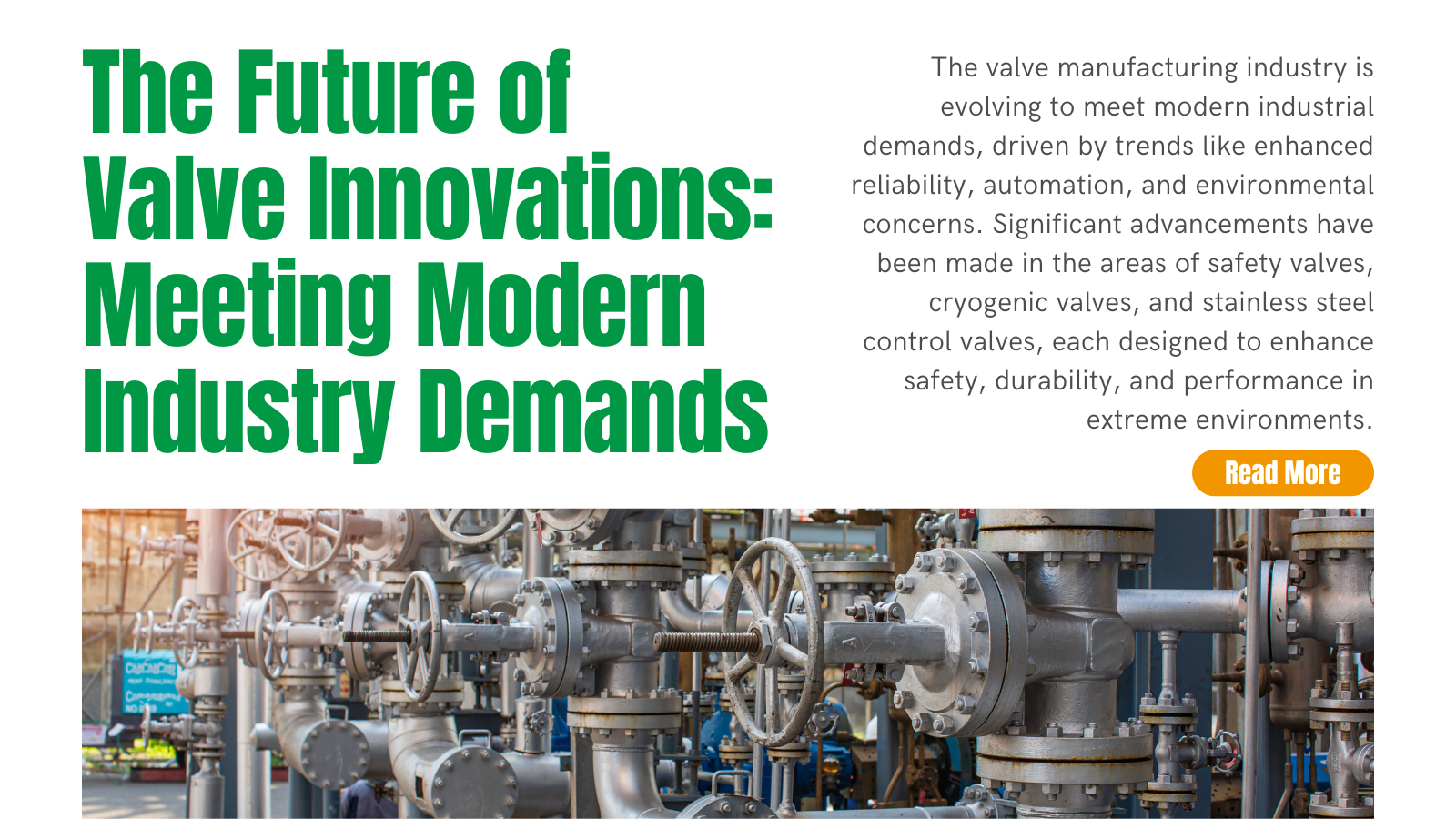The Future of Valve Innovations: Meeting Modern Industry Demands

As industries continue to evolve and face new challenges, the valve manufacturing sector has been at the forefront of adapting to modern demands. With various industries, from oil and gas to chemical and pharmaceuticals, requiring increasingly sophisticated solutions, valve technology is rapidly advancing to meet the ever-growing need for safety, efficiency, and precision. Let’s explore some of the key trends and innovations currently shaping the future of valve design.
Current Trends in Valve Manufacturing
One of the most noticeable trends in the valve manufacturing industry is the push for increased reliability and durability. With industries pushing the limits of pressure, temperature, and operational conditions, the need for valves capable of withstanding extreme environments has never been more critical. Environmental considerations are also playing a major role, with growing regulations requiring valve manufacturers to focus on reducing emissions, energy consumption, and ensuring leak-proof operations.
Moreover, the rise of automation has further driven innovation in valve technologies. Intelligent valve systems integrated with advanced sensors and automated control mechanisms are becoming a standard, helping industries maintain operational precision, reduce human error, and boost overall efficiency. The rise of the Industrial Internet of Things (IIoT) is facilitating predictive maintenance for valves, preventing downtime and minimizing maintenance costs.
Advancements in Safety, Cryogenic, and Stainless Steel Control Valves
In response to the growing need for specialized solutions, three critical areas of valve development have emerged: safety valves, cryogenic valves, and stainless steel control valves.
- Safety Valves: Safety valves are indispensable in ensuring that pressure levels within systems remain controlled and within safe limits. Recent innovations in safety valve design have focused on improving response times and enhancing reliability under extreme conditions. This has been particularly crucial in industries such as oil refining and power generation, where safety is paramount. Modern safety valves are now being designed with better materials, more accurate pressure-release mechanisms, and fail-safe features to prevent catastrophic system failures.
- Cryogenic Valves: The handling of extremely low-temperature fluids and gases, such as liquefied natural gas (LNG), has spurred the development of cryogenic valves. These valves are engineered to perform under extremely cold conditions, where ordinary valve materials would become brittle and prone to failure. Recent advancements have allowed cryogenic valves to function more efficiently at lower temperatures while minimizing thermal loss and enhancing sealing capabilities. These innovations ensure that industries relying on cryogenics can operate with greater efficiency and safety, particularly in the transportation and storage of liquefied gases.
- Stainless Steel Control Valves: Stainless steel control valves have emerged as the preferred choice for industries that require high levels of corrosion resistance, such as chemical processing and water treatment. Recent improvements in stainless steel valve design have enhanced flow control precision while ensuring longer life spans and resistance to aggressive chemicals. Additionally, these valves are now being developed with multi-functional features, allowing for smoother control and higher performance in even the most challenging environments.
PRVs are designed to open and release excess pressure when system pressure exceeds a predetermined set point. This set point is usually based on the system's maximum allowable working pressure (MAWP). Once the pressure rises above this set point, the PRV opens, allowing excess pressure to escape and preventing the system from reaching dangerous levels.
Shaping the Future of Industrial Processes
The continuous innovations in valve design are directly influencing how industries operate, making processes more efficient, cost-effective, and safer. By leveraging these new valve technologies, companies are able to push their production boundaries while adhering to stricter environmental and safety regulations.
The rise of automation in valve systems is not only improving the accuracy of industrial operations but also enhancing productivity by reducing human intervention. Automated control valves, integrated with modern sensor technologies, are becoming essential in maintaining optimal flow rates, pressure, and temperature within critical processes, all while reducing downtime and boosting operational performance.
Furthermore, innovations such as advanced materials, improved sealing technologies, and predictive maintenance capabilities are helping industries achieve global competitiveness. The ability to operate efficiently with minimal energy consumption and downtime provides a crucial competitive edge in today’s fast-paced industrial landscape.
Conclusion
As the valve manufacturing industry continues to innovate and adapt, the future holds exciting potential for even more advanced and specialized solutions. The trends in safety, cryogenic, and stainless steel control valves are just the beginning of the next wave of industrial innovation. As industries demand more from their systems, valve manufacturers are poised to meet these challenges, providing solutions that enhance safety, efficiency, and global competitiveness.
These developments underscore the pivotal role that valves play in modern industrial processes, ensuring that the future of manufacturing, energy, and process industries remains secure, efficient, and forward-looking.
